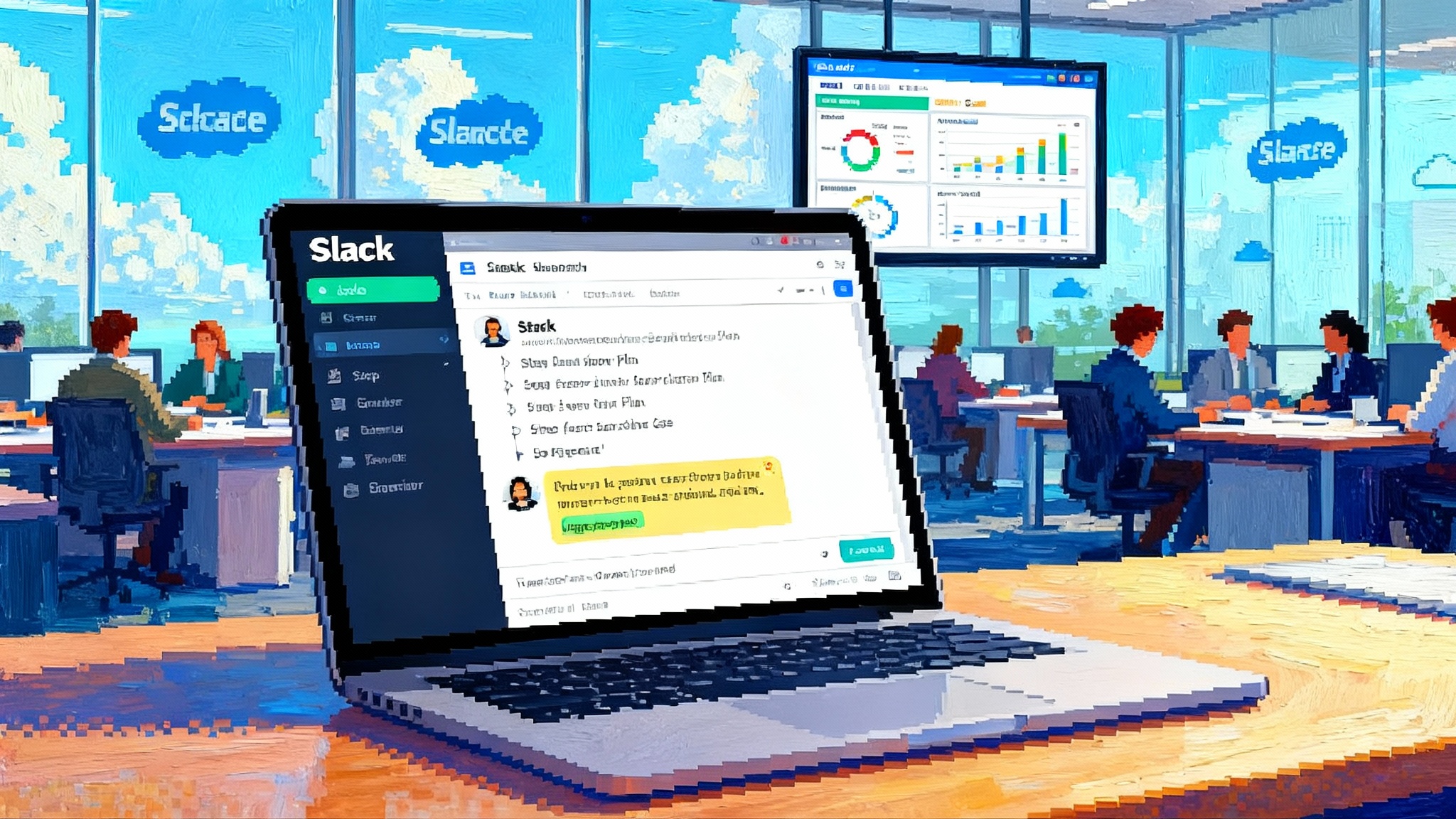TIME’s AI Agent and the race for publisher-native assistants
TIME just turned its archive and newsroom into a conversational product. Here is why publisher native agents will redefine distribution, what to build first, and how to wire rights, safety, and retrieval for trust and growth.

TIME flips the switch on a publisher‑native agent
In November 2025, TIME launched a site‑wide AI Agent that turns its newsroom and archive into a conversational product. The agent lets readers ask questions, generate summaries, listen to instant audio versions, and translate coverage in real time. TIME built it with Scale AI and positioned it not as a novelty, but as a new front door for how audiences navigate journalism. The company framed the product as an extension of editorial judgment rather than a replacement. You can read TIME’s description of the product in its own words in the story behind the TIME AI Agent.
Think of it like installing a concierge in your newsroom. Search boxes make you do the work. This concierge asks what you want to accomplish and pulls from trusted reporting to help you get there. Ask for a five minute audio brief on a topic. Ask for a policy timeline that synthesizes articles from the 1970s to today. Ask for a translation of a developing story into Spanish or Hindi and hear it in a clear voice. The power is not the model alone. It is how the product uses your content and your rules to deliver the right answer, in your brand voice, to someone who wants it now.
Why this matters right now
The shift to agents is not theoretical. TIME has said openly that it is investing in on‑site AI experiences and that platforms like ChatGPT Search are already affecting referral dynamics and product planning. Taken together, that signals a near term reality where more readers first meet a story through an agent, not a homepage or a traditional search result. In plain terms, agents will become the new homepage because they greet the intent, not the click.
If you run a newsroom, that means the hard problems move from page design and headline testing to dialog design, answer quality, and rights‑aware retrieval. The publishers that adapt first will capture direct relationships with audiences at the exact moment of need. Those that wait will rent that relationship from platforms.
The publisher agent stack
When a newsroom ships an AI agent, it is choosing a full‑stack product. The precise model matters less than how you wire data, rights, safety, and analytics around it. Here is the blueprint that will standardize across major publishers.
1) Corpus and curation
Agents are only as good as what they can see. Publishers have three core corpora:
- Live reporting. Breaking stories, wire updates, liveblogs, explainer pages.
- Structured backgrounders. Topic pages, Q&A hubs, policy timelines, election results.
- Archives. Decades of reporting with varied formats and rights.
The product work is to map each piece to a durable source of truth, normalize metadata, and enrich it with entity tags, times, places, and bylines. Think of this as building a museum catalog for your journalism. Every artifact gets a label rich enough for a curator to find quickly. If you skip this, the agent will answer quickly but shallowly.
2) Retrieval‑augmented generation that you can debug
Under the hood, the agent uses retrieval‑augmented generation, which means the system fetches relevant documents and grounds its answer in them. For publishers, two requirements matter:
- Transparent citations. Every answer should show which stories it used, with links to read more. This is not a courtesy. It is a learning signal for your audience and a debugging tool for your editors.
- Deterministic retrieval where it counts. For recurring high‑stakes topics, promote authoritative explainer pages and pinned sources before open‑ended search. You are encoding editorial judgment into the ranking.
A useful mental model: separate Fetch, Frame, and Finalize.
- Fetch pulls a rights‑compliant pack of passages with evidence snippets.
- Frame builds a structured outline with bulletproof facts and open questions.
- Finalize writes in your brand voice and adds links, images, or audio.
Each stage can be tested and improved without swapping the entire model. As browsers evolve into execution layers, consider how the browser as the agent runtime changes your retrieval and caching strategy.
3) Memory and personal context
Publisher agents should remember within session and, with consent, across sessions. Memory unlocks short, useful leaps like “continue from yesterday’s Gaza explainer” or “use my commute voice brief format.” Design memory as a set of small, auditable notes, not as a black box. Let users view, edit, and delete those notes. Give them named modes like Commuter Brief, Parent’s Guide, or Beginner’s Primer. For a deeper dive on why this matters, see how memory becomes the new UX edge.
4) Governance and rights
This is the hardest and most strategic layer. You need a rights ledger that travels with every document and every clip. It should encode:
- Who owns it and for how long
- Where it can be shown and in what languages
- Which derivative uses are allowed, such as synthesis or translation
- Whether training or fine‑tuning is permitted
Treat the ledger like a content passport. If a passage lacks a passport, the agent does not cross the border with it. Publishers have started to sign model and platform deals that set important precedents. One high‑profile example is The New York Times’ generative AI licensing agreement with Amazon, which allows use of Times content in products like Alexa while setting boundaries on training and display. That deal shows how rights and distribution can be bundled into new revenue in the agent era. See Reuters’ coverage of the NYT and Amazon AI licensing deal.
5) Safety and quality controls
Build a red team for your agent the same way you do for election coverage. Define restricted topics and escalation paths. Create answer policies for sensitive areas like health, finance, and law. Require human‑in‑the‑loop for investigative claims or named individuals. Log every prompt and every citation with a retention window and a clear privacy policy. Layer in production‑grade AgentOps and observability for agents so failures are detectable and recoverable.
6) Multimodal delivery
Voice will be the most popular interface for on‑site agents because it compresses time. A one minute answer that reads like your favorite host is a product, not a feature. Images, maps, and timelines should be treated as tool invocations rather than static embeds. Let the agent decide whether a map or a chart answers the question faster than a paragraph.
Design beats model selection
Which model to use will matter less than how you design the experience around it. That is because models are becoming like processors. They get faster and cheaper each quarter, and most publishers will mix and match. A reliable pattern is emerging:
- Use a premium frontier model for delicate reasoning and tone.
- Use a mid cost model for bulk summarization and translation.
- Use a small fine tuned model for deterministic formatting tasks like outline creation or voice script templates.
The differentiator is the interface, the retrieval rules, and the data. Agents that feel like journalists from your newsroom will win trust. Agents that feel like autocomplete will not.
Here are three design moves that set winners apart:
- Ask less, do more. Provide sensible defaults. Offer one tap follow ups and show your work with citations.
- Shape the conversation. Turn vague prompts into choices. When a reader asks about a bill, suggest paths like Timeline, Who Is Affected, and What To Watch Next.
- Let editors steer. Give editors a dashboard to pin sources, rewrite follow ups, and promote evergreen explainers when a topic trends.
The new monetization mix
Agents change how money flows, but the levers are familiar. The art is to align monetization with utility rather than with pageviews.
- Subscriptions. Offer agent features as parts of clear bundles. For example, ad free voice brief, multilingual translation, topic tracks that notify you when a story changes, and archive research credits. Avoid velvet rope answers. Make the free tier useful, and let premium tiers save time and deepen expertise.
- Commerce. Use the agent to personalize shopping guides in transparent ways. If the reader asks for a laptop for photo editing, the agent should present testing methodology, link to full reviews, and show current best picks. Route to merchant partners within the agent with clear labeling of affiliate relationships. Add price history and repairability scores where available.
- Advertising. Conversation native ads will replace many banner slots. Think of sponsored modes such as Commuter Brief presented by a headphone brand, with strict separation from editorial retrieval. Frequency caps and domain exclusions carry over to the agent easily since every answer is assembled on the fly.
- B2B licensing. Package your archive as an agent ready corpus for education, finance, or health partners with your rights ledger attached. Offer model training rights only where you can audit and revoke.
Publishers that have been experimenting with AI driven audio and on‑site search have seen signs that more proactive formats can lift engagement. The lesson is to charge for convenience and clarity, not for clicks.
Trust and safety trade offs you can plan for
- Speed vs certainty. During breaking news, the agent should default to fast verified snapshots and link to a liveblog for nuance. When certainty is low, answer with what is known, what is unknown, and when the next update is expected.
- Personalization vs fairness. The agent should remember language and format preferences, not political lean. On contested topics, it should route to packages built by editors that present verified facts and context before commentary.
- Agency vs transparency. Give users a prominent toggle to reveal sources and reasoning. This is the simplest way to avoid over‑trust. If an answer cannot produce sources, it should say so and invite a handoff to a human.
- Archive sensitivity. For historical pieces with outdated language or facts superseded by later reporting, add a banner in the agent citations that explains context and links to the corrective.
Distribution is being rewritten as agents become the homepage
For a decade, search and social dictated the journey. In the agent era, intent arrives as a question, and the agent chooses which source to consult first. That flips distribution logic. Publishers tell us that platform agents have already become meaningful referrers, and TIME has stated that on‑site AI is central to its growth strategy and that new agent‑like surfaces are becoming top referral sources. The implication is clear. Your own agent can and should be the starting point for loyal readers. Platform agents will be valuable but rented entry points. Design for both, and instrument them differently.
Here is how to measure the change:
- Deflection rate. How often does an agent answer resolve the reader’s need without a click to a separate page
- Assist rate. How often does the agent drive a deeper session into your site or app
- Source mix. What share of answers use your archive vs external sources
- Referral quality. How long do platform referred agent sessions last compared with your own agent sessions
These metrics matter more than raw pageviews because they reflect whether your journalism is informing people at the pace and format they prefer.
A 90 day plan to build your agent
Day 0 to 15
- Pick three high value use cases: breaking news updates, evergreen explainers, and product recommendations.
- Assemble a cross functional team with one accountable editor, one product lead, one applied scientist, and one ads or commerce lead.
- Ship a read only prototype to the newsroom. Use archived packages to test prompts and citations.
Day 16 to 45
- Stand up your rights ledger. Inventory partner feeds, freelance agreements, photo rights, and video clips. Mark what can be synthesized, translated, or monetized with ads.
- Build your Fetch, Frame, Finalize pipeline. Start with a premium model for Finalize and a smaller model for Fetch and Frame.
- Add voice. Generate 60 second briefs for two beats in two languages. Measure completion rate and satisfaction.
Day 46 to 75
- Launch a public beta to a logged in cohort. Turn on transparent citations and session memory. Add a feedback button that bookmarks the underlying sources for review.
- Pilot conversation native ads in a free tier mode, with a clear label and a cap.
- Prepare a premium tier with multilingual translation and topic tracking.
Day 76 to 90
- Review logs with editors twice per week. Identify failure modes and rewrite retrieval rules.
- Publish an agent policy page that lists safety rules, escalation paths, and data handling. Make it a product feature, not a legal afterthought.
- Expand the corpus to include curated external sources with explicit licenses and clear labels in the interface.
What success looks like in 12 months
- At least 20 percent of logged in sessions begin with the agent or an agent powered card.
- Audio briefs account for a double digit share of total time spent for your top five beats.
- Commerce sessions initiated by the agent convert at a higher rate than article referrals, with clear disclosures.
- Editors regularly pin new explainers and see those pins shape answers within minutes.
- Advertisers commit to agent modes as part of their annual plans because they see higher attention and recall.
The bottom line
TIME’s launch is not just a feature drop. It is a signal that the contest in media is shifting from model access to product craft. Models will keep getting better and cheaper. The durable advantage will come from two places: how you design the conversation and how you curate the data behind it. Build the ledger, wire the retrieval, and give editors a steering wheel. Then focus the agent on real jobs readers have every day. Do that and you will not only keep your audience. You will meet them at the exact moment they need you, in the language and format that fits their life.








